
There is No Such Thing As Despair
Now we can begin to understand Rebbe Nachman's words. Despair only comes because the spark of life is hidden within the shattered vessels...

"There is no despair in the world at all."
(Likutey Moharan II:78)
Rebbe Nachman of Breslov made a powerful statement, "There is no despair in the world at all!" These are not words of relative truth, allowing for the existence of some low, dark place where despair reigns, so that if a person falls there, God forbid, he never emerges. Rebbe Nachman looked to the very root of creation, from beginning to end, and saw that despair simply does not exist, no matter what. God created His world so that nothing is ever completely lost. Everything can achieve its final tikun.
The Breakage and Repair of the Vessels
According to Kabbalah, when the world was created, an event called "the breaking of the vessels" occurred (Etz Chaim, Heichal Nikudim, p. 34). To put it simply: The powerful light that God revealed at the time was too much for creation to hold, and the vessels meant to contain that light broke. (There are many other causes of the breakage of the vessels mentioned in the writings of the Arizal [Etz, Chaim, Sha’are HaMelachim, chapter 5]. There was no love between them and they were not united, metaphorically speaking. Likewise, the lights were intermingled and not in their proper place, as will be in the time of repair. In all, there are eleven different reasons for the breakage given.) The Midrash says: "Before God created this world, He made and destroyed worlds. ‘These please Me, these do not,’ He said" (Bereishit Rabbah 3:7). That is, there first had to be a breakage before God emanated creation as we know it now. Thus, the destruction and repair of the vessels lies at the heart of creation and its mysteries.
According to the Arizal, the breaking of the vessels is not a one-time occurrence of the distant past, but a continual phenomenon. "That which was will be; that which is done is that which will be done; there is nothing new under the sun" (Kohelet 1:19), said King Solomon in reference to this underlying process in creation.
Even though God repaired the worlds after the original breakage, He left the job unfinished. The final rectification depends upon the Jewish People. They must draw God’s Presence into this dark world, despite all the pain and exiles they suffer, until the arrival of Moshiach, who will complete the process in an amazing way. Everything that happens during these six thousand years to every component of the universe, and especially in the lives of people, with their endless ups and downs, all existed in the roots of creation, and is now merely being revealed. At the time of the original breakage God decided what to repair and what to leave for us. When we choose good over evil, we become partners with God in the act of creation. Such is His Will.
The Enduring Point
Even after the breakage, there remained sparks of light that were not destroyed. It is through these sparks that all the worlds are repaired (Although there were many aspects of the breakage, it primarily affected the vessels of each level). Likewise, in every difficult situation, when life seems shattered to its very foundation, there remain unbroken points of goodness from which everything can be rebuilt. We must remember that this is the original intention of God, and that we must endure the hardship, overcome it and ultimately raise it up. This is like a river that issues from a spring. The drying up of the river is like the breakage, as the verse says, "The river will dry up" (Yishaya 19:5). Weeds and thorns grow there. Snakes and scorpions crawl there. Nonetheless, only the river is affected, the spring remains. Although it is hidden for the moment, when it flows again it will flood the river, washing away the weeds and thorns, destroying the vermin, as though it were never dry at all.
This is a model for life. Even when things seem dry and empty, without a trace of spirit, one must not abandon hope. Within the breakage, there is a point that remains whole. It must exist, for that is the very nature of creation. When God arouses this point, all of life will be renewed. Then the person will realize that there never was any breakage at all. This is reflected in our daily prayers, when we say that God causes redemption to flourish (In the weekday Shemoneh Esrei. Based upon Yishaya 58:8). In most cases, deliverance lies buried in the ground. However, God can reveal it and cause it to sprout forth at any moment.
Thus, the statement, "There is no despair in the world at all!" is based upon the very foundation of reality – and the mystery of breakage and repair. No matter how bad the destruction may be, some unbroken point always remains from which it is possible to build everything anew.
The Point Called "Good"
The verse says: "And the earth was empty and desolate, and darkness was upon the face of the waters." This refers to the breakage. "And God said: Let there be light," refers to the repair. This light had already existed, but now it was being revealed. "And God saw that the light was good," refers to the point that did not break. After the breakage, the repair of creation came about through this good (Etz Chaim, Sha’ar 1:4, 8:1; Zohar 1:263a).
The Torah is also called "good," as it says, "I have given you a good thing" (Mishlei 4:2). The tzaddik is also called "good." "Say of the tzaddik, that he is good" (Yishaya 3:10). Thus God said to Noach: "I see that you are righteous before Me in this generation" (Bereishit 7:1). Noach, the tzaddik, was the point of goodness hidden in the Ark, untouched by the destruction of the Flood. From him, the entire world was rebuilt.
In every Jew there is a holy point in which the pure love of God resides. Even if it is hidden, or seemingly destroyed, it continues to exist, for it is impossible for the breakage to affect it. A person who clings to Torah and tzaddikim, who speaks about holy things, can arouse this holy point, which is the tzaddik within. Then he becomes attached to the eternal point from which everything can be repaired. For there is no such thing as despair at all (Likuty Moharan, ibid).
Why the First Tablets Were Not Called Good
The Talmud points out that the word "good" was not written in the first set of Ten Commandments, but is found in the second set, in the commandment "Honor your father and mother as the Lord your God has commanded you, that your days may be prolonged and it will be good for you" (Devarim 5:16).
He giving of the first tablets, the destruction and the regiving, all reflect this process of breakage and repair. The Holy One, anticipating this breakage, concealed the point called "good" from the first tablets, so that it would not be affected, and the second tablets could be given. Had the work "good" – the goodness upon which the repair depends – actually been inscribed there, it would have been destroyed by the breakage, and goodness would have ceased from Israel, God forbid (Ibid).
Marriage – the Repair of Death
According to Kabbalah, death is also considered a type of breakage. At the time off the original breakage, 288 sparks of light fell into the darkness. This is alluded to in the verse: "And the earth was barren and desolate, and darkness was upon the face of the deep." Nonetheless, "The spirit of God hovered over the face of the waters." This refers to the 288 sparks of light that hovered over the broken vessels. Through these sparks, the world is repaired. (The root letters of the word MeRaChePheS – hovers, have the numerical value of 288. The remaining letters spell the word mes, dead.)
Likewise, when a person dies, a small part of his soul hovers over the bones. The Zohar calls this, "the breath of the bones." This is the meaning of the verse: "His soul mourns over him" (Iyov 14:22). At the time of the resurrection of the dead, a flow of new life will descend from above. This will join the breath of the soul that still rests upon the bones. Thus, the verse states: "And the Lord will guide you continually, [He will] satisfy your soul in drought, and make your bones fate, so that you will be like a watered garden" (Yishaya 58:11). Even before the resurrection, throughout our lives, God blesses us with hope and renewal from the eternal point that did not break.
Marriage also enables a person to draw upon this spark that did not break, as the verse states: "A person who finds a wife, finds good" (Mishlei 18:22). Chazal also say: "If a person raises his son to be a tzaddik, it is as if he will not die" (Bava Basra 116a). This is because a son who is a tzaddik, who "lives by his faith," carries on the spark of his father forever.
The Torah lists the names of the eight non-Jewish kings who reigned in the Land of Israel before the arrival of the Jewish People (Bereishit36:31-39). In the case of the first seven, the Torah specifically mentions their deaths. According to the Arizal, these verses allude to the breakage of the vessels (Etz Chaim Sha’ar 8, Drush Nekudot on Bereishit 36). However, no mention is made of the death of the eight king, who represents the World of Rectification. The verse does mention the name of his wife, however. Because he was married, the unbreakable point within him was revealed (Etz Chaim, Sha’ar HaTikun 3).
There is a story about Reb Boruch of Medziboz, whose daughter married one of the Tzaddikim of the generation, a young man renowned for his great sincerity. At the wedding, Reb Boruch asked the groom’s father to say some words of counsel to the boy, as was customary before marriage ceremonies. The father turned to his son and said, "You should know, my son, the reason we must marry is because we must die" (I heard this from Rabbi Levi Yitzchok Bender z"l of Jerusalem). That was all he said. He didn’t even explain himself. Yet, as we explained above, marriage comes to repair and heal the existence of death.
There is a similar story in the Talmud. At the wedding of Mar, the son of Ravina, the guests asked Rav Hamnuna to sing for them. "Woe to us that we will die!" he sang. And they all replied, "Yet Torah and mitzvot protect us" (Brachot 31a). Is this what one sings at a wedding? However, precisely because they were evoking that point of eternal goodness through the wedding ceremony, they were able to mention death and its rectification through Torah and mitzvot. For the resurrection comes about through Torah; through it we are protected from the breakage of death.
This I Know – There is Never Any Despair
These ideas can all be found in the story of the prophet Yeshayahu (Isaiah)and King Chezkiyahu (Hezkiyahu). Chezkiyahu was gravely ill, condemned to death by God, because he refused to have children. Yeshayahu came to inform him of his end. According to what we have said above, Chezkkiyahu’s condition was hopeless because he had not revealed the eternal point that shines through marriage. Nonetheless, he replied to Yeshayahu, "Stop your prophesying and leave. I heard in the name of my great-grandfather, Dovid Hamelech (King David), that even if a sharp sword rests on a person’s neck, he should not stop hoping for God’s compassion" (ibid 10a). These are Rebbe Nachman’s words exactly. There is no despair in the world at all! The judgment had been passed. Chezkiyahu was already near death. The sharp sword lay upon his neck – nonetheless, he did not despair. He turned his face to the wall and prayed to God with all his heart. Yeshayahu had barely left the palace, when the word of God reached him, saying, "Turn again and tell Chezkiyahu, the leader of My people: Thus says the Lord, the God of Dovid your father. I have heard your prayer and seen your tears. Behold, I will heal you… and add fifteen years to your life (Yeshayahu 38:5.6).
The Illusion of Despair
Now we can begin to understand Rebbe Nachman’s words. Despair only comes because the spark of life is hidden within the shattered vessels. But God does not allow any breakage to occur without a point remaining intact. Despair is only an illusion; it does not exist at all!
Deliverance is at Hand, Only it is Concealed
Many times in life, we find that the answer to the greatest difficulty, whether physical or spiritual, was right under our noses. Only we didn’t see it. The Midrash says, "Everyone is presumed to be blind, until God opens their eyes" (Bereishit Rabbah 53:14). That is, until God opens the mind’s eye and graces a person with insight and understanding to save him from his troubles.
This is similar to the story of Yishmael (Ishmael) and Hagar (Bereishit 21). Soon after being sent from Avraham’s house, Yishmael and Hagar became lost in the desert and ran out of water. They had actually come upon a well, but because they were already sentenced to death, they could not see it. Only when Hagar abandoned all other hope and threw herself completely upon God’s compassion, that "God heard the voice of the lad where he was… And God opened her eyes, and she beheld a well of water" (ibid 21:19).
After Total Destruction – The Restoration
This process is found in many areas of life. For instance, a seed cannot grow until it completely decays in the ground. Only when it ceases to exist is its hidden potential revealed. It sprouts forth, blossoms and gives sweet fruit – just like the revival of the dead. (Incidentally, the Hebrew word for flower, PeRaCh, has the numerical value of 288, for the blossoming of a flower also partakes of the mystery of the 288 sparks that did not break.)
A Story Thirteen Thousand Camels long
The verse says, "And Atzel had six sons" (I Divrei Hayamim 8:38). One chapter later it again states, "And Atzel had six sons" (ibid 9:44). Rashi, on this verse, quotes the words of Chazal: "Between the first mention of Atzel and the second there are 13,000 camels loaded with midrashim." On these few lines, so many commentaries could be written that thirteen thousand camels would be needed to carry them all!
The Arizal explains this statement. The first time the word Atzel is written, it is punctuated in such a way that it can be read not only as a man’s name, but also as the verb "to emanate" in the past tense. The second time it appears, it can be read in the present tense. Between the first Atzel (that is, the first emanations from the world of Atzilut, before the breakage) and the second Atzel (the newly repaired emanations) is a very long story indeed – the history of the entire creation.
Thus the verse says: "How great is the goodness that you have hidden away for those who fear You" (Tehillim 31:20). This "goodness" is the point that did not break. It is hidden away for the righteous in the World to Come. The first letters of the words, "That you have hidden away fro those who fear You," also spell the word — referring to Atzilut, the Supernal world of Emanations and source of repair (Sefer HaGilgulim 66).
"What" is Our Deliverance
According to the Kabbalah, the holy Name through which God brings about the rectification is Mah. This is derived from God’s four-letter name spelled out in full using the letter alef (יוד הא ואו הא) giving it the numerical value of forty-five, mem-heh: Mah (Etz Chaim, Sha’ar HaTikun 1,2). There are forty-five verses between the first mention of Atzel’s name and the second. This represents the entire period of the creation’s renewal, which will culminate in the revelation of God in the World to Come.
Sometimes, when a person is deep in despair, having tried every possible option, he finally acknowledges his inability to save himself and totally surrenders his life to God. He lifts his eyes to Heaven and draws upon himself a new light from the holy name Mah (The letters מה- mah, also spell the Hebrew word, "what".). He comes to realize, "What – mah — are we? What – mah – is our kindness, and what – mah – is our own power of deliverance?" (Likutey Moharan II:2). Then an amazing thing happens. His tzorah – trouble, becomes tzohar – a great illumination. For, just like the birth of a fledgling, the egg must be completely broken before the new life can emerge (Maggid Devorav l’Yaakov 24).
How much confusion, how many mistakes and how much tearing down and replanning is necessary before a building is finally erected. How much effort, pain and emotional turmoil must parents go through before they see their children maturing and progressing in the way of God. Life is full of such examples.
Thus the verse says: Let this ruin be under your hands" (Yeshayahu 3:6). On which Chazal comment, "A person is not careful with his observance of Torah until he first stumbles in it" (Gittin 43a). For as we said, the whole repair comes only after the fall.
Above all, we must be careful not to become so confused by the obstacles in life that we ruin more than we already have. We must only focus on the present difficulty and think of how to turn it into good. This is how God arranged His creation. The greatest wholeness always comes after the worst fall.
And it was Evening, and it was Morning
This process can be found in every creative act. Consider any new invention. Despite all the effort the creator puts into it, and all the preparation he makes before it is completed, it still never comes out right the first time. Various flaws and mistakes become apparent, and he must take it apart and put it together many times before it is finished. (As the Midrash says: God created and destroyed many worlds until He completed this one.) Sometimes, subtle flaws become known only after the product has reached the market, and the manufacturer has to design a new one and incorporate all the corrections. Every craftsman will testify to the fact that he made many mistakes before becoming a true artisan. In order to do anything well, whether a physical or spiritual accomplishment, one first has to overcome a tremendous number of setbacks. This is the nature of creation. Night precedes day, darkness precedes light. Yet, despite all the problems, there is absolutely no reason to become depressed. In every fall there is a point that does not break, from which issues forth new life, better and more complete than before. Rebbe Nachman realized this. With clear, deep insight, he considered the very roots of creation and then made his eternal statement, "There is no such thing as despair at all!"
(After all we have said, we have not even scratched the surface of the meaning of breakage and repair. In the writings of the Arizal, Rabbi Chaim Vital says that he is revealing only the minutest portion of this wisdom (Sha’arei Kedusha, Introduction). The great Kabbalist, Rabbi Shlom Eliyashev, author of the kabbalistic work, Leshem Sh’vo V’achlemah, wrote an entire book on this topic alone, called Sefer HaDe’ah, an acrostic for the Hebrew words, "An Exposition on the World of Destruction." Every mystery concerning every aspect of creation can be solved with this knowledge. "How great is the goodness hidden away for those who fear Him." Happy are those of simple faith, who live by the Torah of God.)
(Used with permission from the author. From the book "In all my Ways" Keren Ohr Publications)






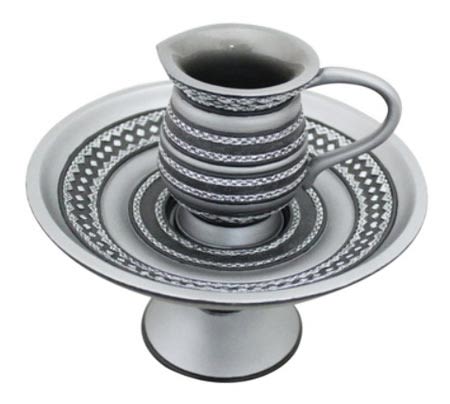
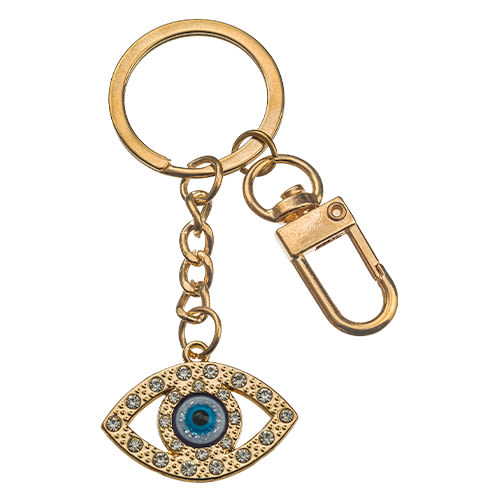
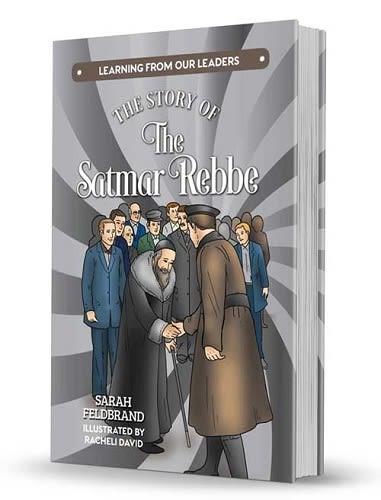
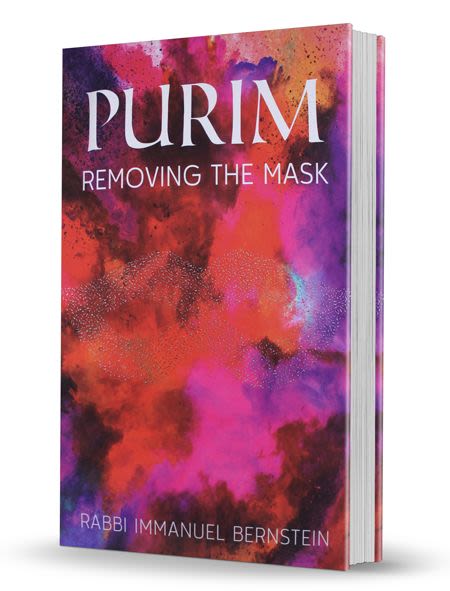
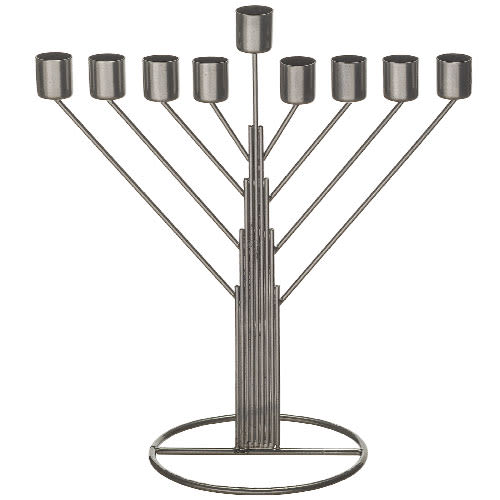
Tell us what you think!
Thank you for your comment!
It will be published after approval by the Editor.